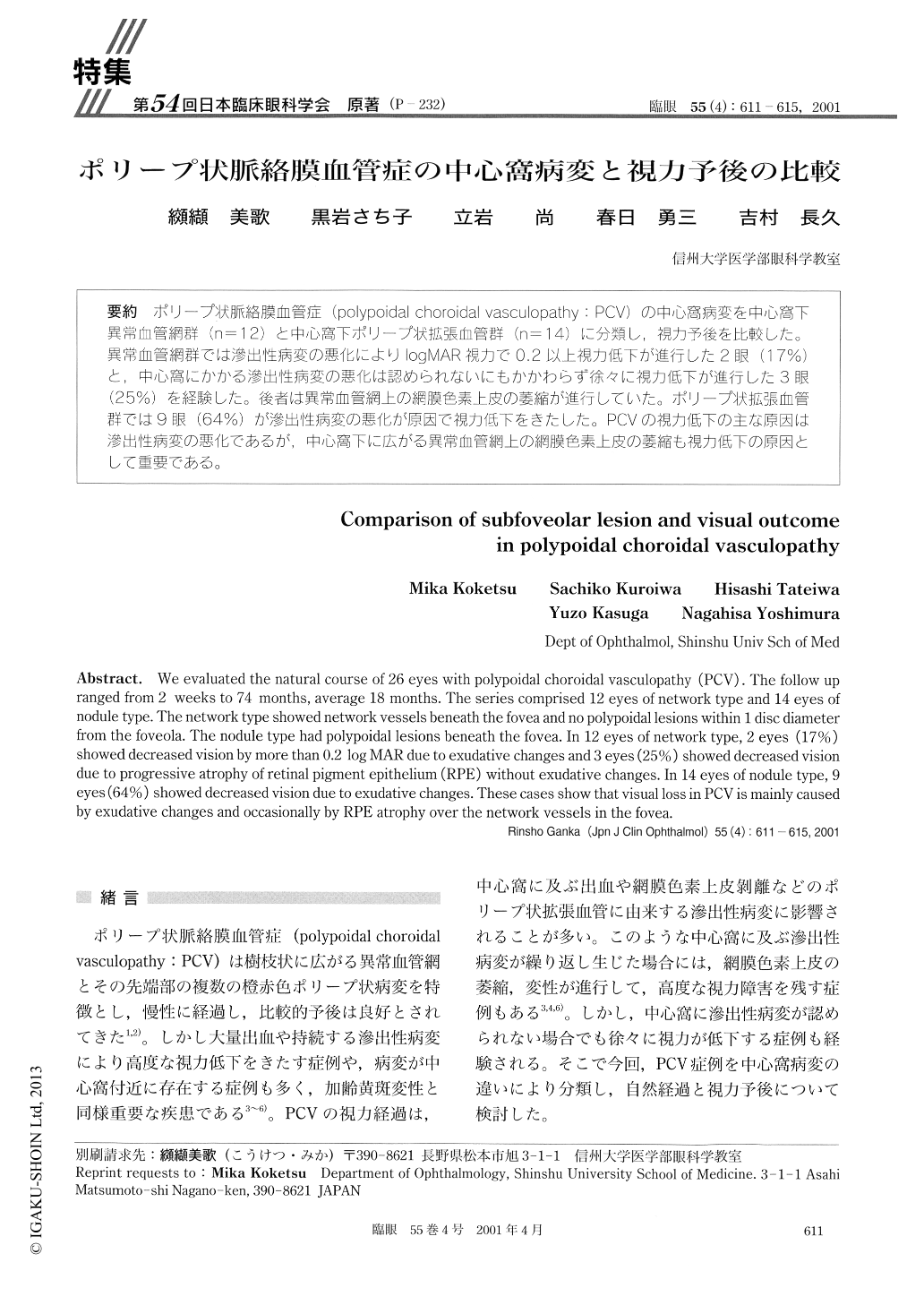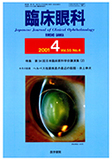Japanese
English
- 有料閲覧
- Abstract 文献概要
- 1ページ目 Look Inside
ポリープ状脈絡膜血管症(polypoidal choroidal vasculopathy:PCV)の中心窩病変を中心窩下異常血管網群(n=12)と中心窩下ポリープ状拡張血管群(n=14)に分類,視力予後を比較した。異常血管網群では滲出性病変の悪化によりlogMAR視力でO.2以上視力低下が進行した2眼(17%)と,中心窩にかかる滲出性病変の悪化は認められないにもかかわらず徐々に視力低下が進行した3眼(25%)を経験した。後者は異常血管網上の網膜色素上皮の萎縮が進行していた。ポリープ状拡張血管群では9眼(64%)が滲出性病変の悪化が原因で視力低下をきたした。PCVの視力低下の主な原因は滲出性病変の悪化であるが,中心窩下に広がる異常血管網上の網膜色素上皮の萎縮も視力低下の原因として重要である。
We evaluated the natural course of 26 eyes with polypoidal choroidal vasculopathy (PCV) . The follow up ranged from 2 weeks to 74 months, average 18 months. The series comprised 12 eyes of network type and 14 eyes of nodule type. The network type showed network vessels beneath the fovea and no polypoidal lesions within 1 disc diameter from the foveola. The nodule type had polypoidal lesions beneath the fovea. In 12 eyes of network type, 2 eyes (17%) showed decreased vision by more than 0.2 log MAR due to exudative changes and 3 eyes (25%) showed decreased vision due to progressive atrophy of retinal pigment epithelium (RPE) without exudative changes. In 14 eyes of nodule type, 9 eyes (64%) showed decreased vision due to exudative changes. These cases show that visual loss in PCV is mainly caused by exudative changes and occasionally by RPE atrophy over the network vessels in the fovea.

Copyright © 2001, Igaku-Shoin Ltd. All rights reserved.


